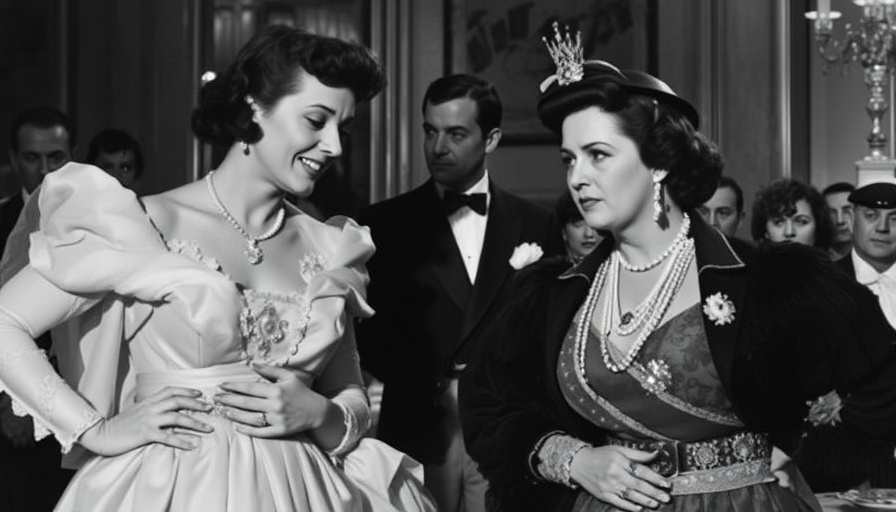
The Mad Director and His Vision
Queen Kelly represents a unique moment in cinematic history, illustrating the challenges of creativity against the rigid frameworks of its time. Directed by Erich von Stroheim, whose infamous reputation often preceded him in discussions of Hollywood's eccentricities, the film's production history reveals the tumult that ensued when artistic ambition collided with commercial necessity. Swanson’s belief that the film’s content would never satisfy the censors was not an isolated incident; it represented a broader conflict between the desires of artists and the limitations imposed by societal norms.
A Closer Look at Queen Kelly's Storyline
At its core, Queen Kelly is an extravagant tale characterized not just by lavish visuals but by an underlying exploration of desire and despair. The plot follows Patricia Kelly—a convent girl ensnared in the troubled love triangle with Prince Amadeo and the manipulative Queen. This film doesn't just showcase a royal romance but dives deep into themes of betrayal, class, and societal expectations—elements that resonate with audiences today, reminding them of the timelessness of love and personal ambition.
The Relationship That Sparked a Film
The film's origins are equally fascinating, born out of a romantic entanglement between Swanson and Joseph P. Kennedy. This affair highlights an era when Hollywood was not merely about celluloid dreams but was also a stage for personal drama and professional rivalry. Swanson, known as one of the biggest stars of her time, and Kennedy, connected with future power players, leveraged their relationship to produce a film that defied the norms of its time—ultimately leading to its downfalls, such as poor financial management and creative discord.
The Liabilities of Excess: When Ambition Backfires
As costs spiraled during production, the reality of Queen Kelly became more than just cinematic embellishment; it became a cautionary tale about the consequences of excess. Von Stroheim's extravagant demands, such as providing silk underwear for extras, showcased not just his artistic vision but also an unsustainable approach to filmmaking that would ultimately lead to the film's premature cancellation. The dual conflicts of creative ambition and economic restraint illustrate how artistic decisions can lead to overwhelming consequences.
The Significance of the Venice Film Festival Screening
The upcoming screening of Queen Kelly at the Venice Film Festival offers a unique opportunity for both nostalgia and reinterpretation. Featuring a restoration by Dennis Doros with innovative recreations, this debut not only serves as a retrospective on lost works but also invites modern audiences to engage with the film through contemporary lenses. As we view the film in its restored glory, we can better understand the historical context and artistic intent behind its complex narrative.
How Queen Kelly Reflects Contemporary Issues
Today, Queen Kelly holds mainstream relevance beyond its tumultuous production. It serves as an emblem of the industry's ongoing struggles between creative freedom and financial viability. For modern filmmakers, the lessons of Queen Kelly—particularly the importance of collaboration and vision—are as pertinent now as they were in 1928. The film’s themes echo current debates about censorship, artistic integrity, and the evolving nature of storytelling in the entertainment industry.
Engaging with Queen Kelly not only enriches our understanding of cinema history but also inspires today’s creators to honor both their artistic vision and practical constraints in an industry that is perpetually in flux.
As digital nomads passionate about culture and history, consider exploring the deep narratives behind other forgotten films and their societal significance. This knowledge fuels your creativity and understanding, making your journeys—whether physical or intellectual—even more enriching.
 Add Row
Add Row  Add
Add 




Write A Comment